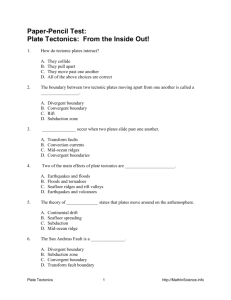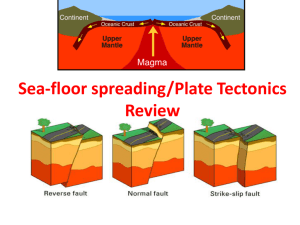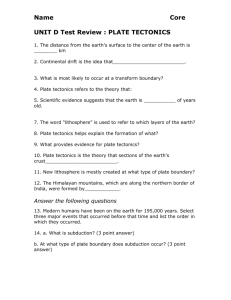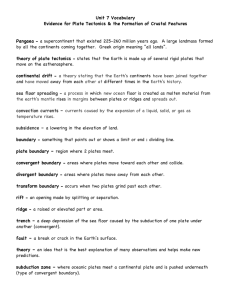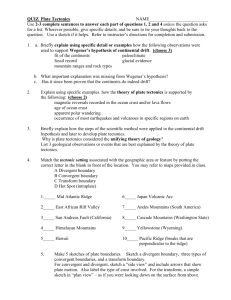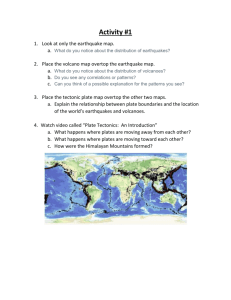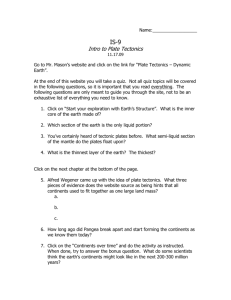Earth`s Interior & Plate Tectonics
advertisement
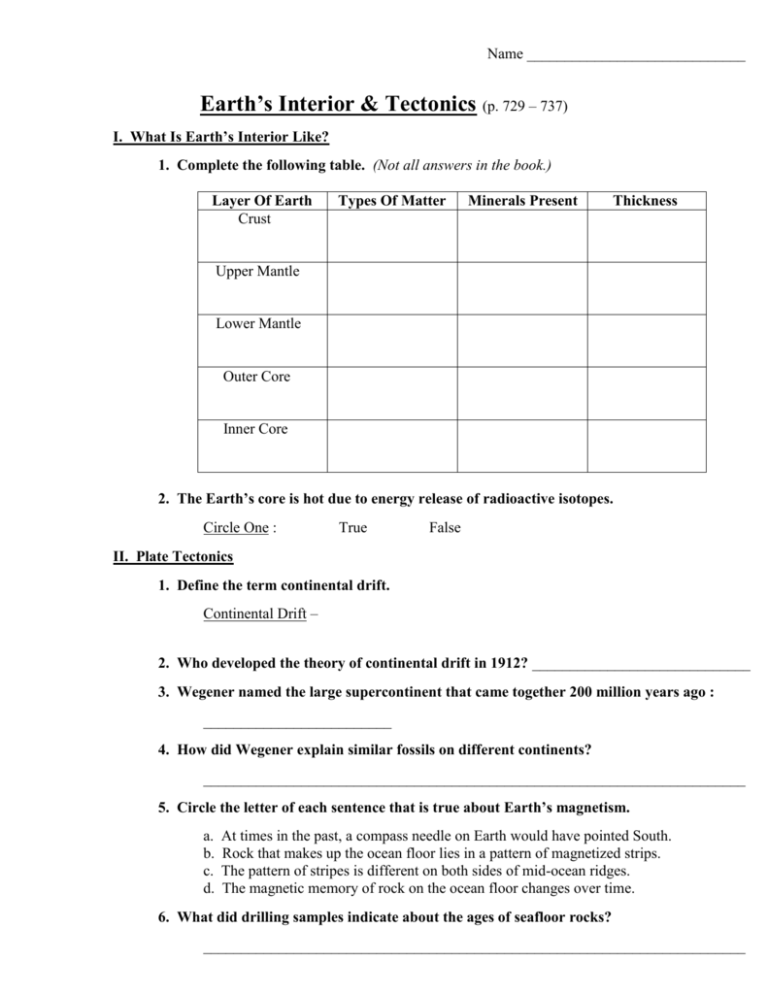
Name _____________________________ Earth’s Interior & Tectonics (p. 729 – 737) I. What Is Earth’s Interior Like? 1. Complete the following table. (Not all answers in the book.) Layer Of Earth Crust Types Of Matter Minerals Present Thickness Upper Mantle Lower Mantle Outer Core Inner Core 2. The Earth’s core is hot due to energy release of radioactive isotopes. Circle One : True False II. Plate Tectonics 1. Define the term continental drift. Continental Drift – 2. Who developed the theory of continental drift in 1912? _____________________________ 3. Wegener named the large supercontinent that came together 200 million years ago : _________________________ 4. How did Wegener explain similar fossils on different continents? ________________________________________________________________________ 5. Circle the letter of each sentence that is true about Earth’s magnetism. a. b. c. d. At times in the past, a compass needle on Earth would have pointed South. Rock that makes up the ocean floor lies in a pattern of magnetized strips. The pattern of stripes is different on both sides of mid-ocean ridges. The magnetic memory of rock on the ocean floor changes over time. 6. What did drilling samples indicate about the ages of seafloor rocks? ________________________________________________________________________ Name _____________________________ 7. Define the term plate tectonics. Plate Tectonics – 8. What is believed to be the cause of plate movement? ______________________________ III. Plate Boundaries (Some examples not in the book.) 1. Volcanoes and earthquakes typically occur around plate boundaries. Circle One : True False 2. Match the plate boundary with the correct definition. 1. ________ Divergent Boundary A. Two plates slip past each other. 2. ________ Convergent Boundary B. Two of Earth’s plates slide apart. 3. ________ Transform Boundary C. Two plates come together. 3. Define the term rift valley. Rift Valley – 4. List two examples of a divergent boundary on Earth. 1. ________________________________ 2. ________________________________ 5. Define the term subduction. Subduction – 6. List two examples of each type of convergent boundary on Earth. 1. Oceanic-Continental Convergence ____________________________ ____________________________ 2. Oceanic-Oceanic Convergence ____________________________ ____________________________ 3. Continental-Continental Convergence ____________________________ ____________________________ 7. Define the term fault. Fault – 8. List two examples of a transform boundary on Earth. 1. ________________________________ 2. ________________________________



